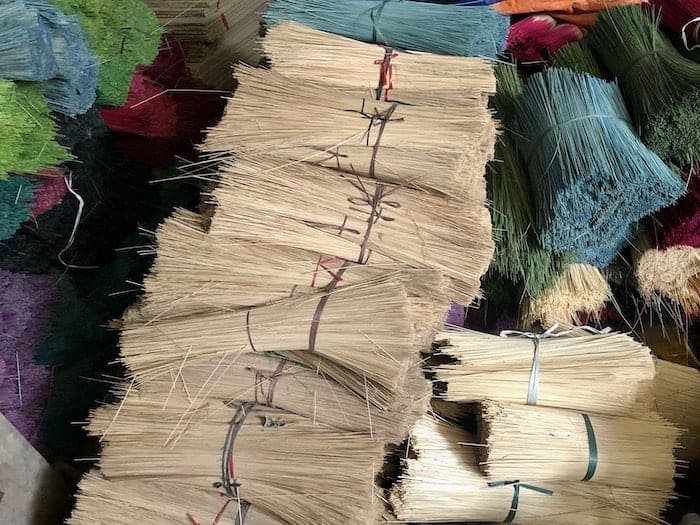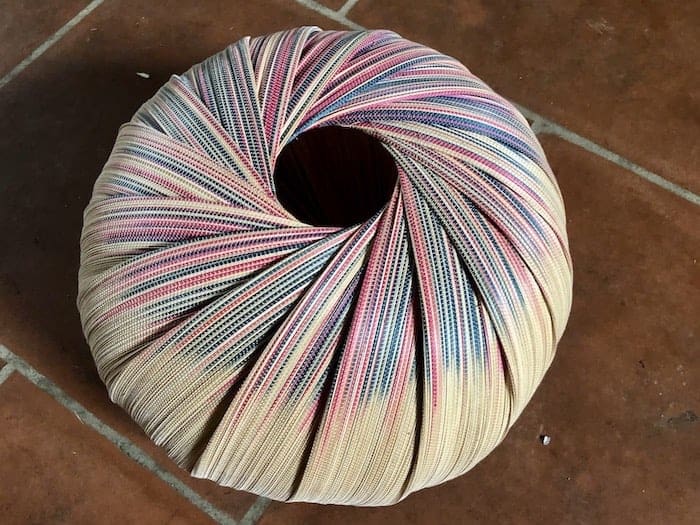Many rattan mats are woven by a weaving machine just as you would weave a piece of fabric. Though this process has been used a lot for window and shade treatments, today many other products are also using the same handwoven rattan material.
The rattan mats are all hand-woven on handlooms with a small electrical motor. The rattan is cut into small pieces and is either dyed or left natural before they are handwoven. The workers who weave the rattan must be highly skilled and able to work quickly and accurately. There are a variety of home decor and home furniture products that the rattan mats can be used on.
Table of Contents
- Essential Guide to Hand-Weaving Rattan Mats for Home Decor
- What is the Rattan Mat Weaving Process?
- Developing Home Decor Products With Rattan Mats
- Related Questions
Essential Guide to Hand-Weaving Rattan Mats for Home Decor
Rattan mats, celebrated for their strength and versatility in home decor, are crafted from natural rattan. This material stands out for its remarkable durability and yet exhibits remarkable flexibility when cut, making it ideal for creating these intricate mats. Additionally, rattan’s ability to absorb dyes effectively allows for easy customization in a variety of colors to suit different decor styles.
The rattan material used for the rattan weaving mats is a natural rattan. This is because rattan is an extremely strong and versatile material, yet when cut, it can have the flexibility needed to make these rattan mats. Rattan is also able to take the dyes well so the material can be easily dyed into the required colors.
To find out more about the rattan material, you can read our blog What is The Rattan Material Use in Home Decor Products? by clicking here.
Watch our video to see how the rattan mats are woven. Click on the link below.
What is the Rattan Mat Weaving Process?
These rattan mats are woven with all-natural rattan. This gives them a nice natural look and feel.
Preparing Rattan Materials
Before the mats can even be woven, there are quite a few materials that must first be prepared. Here are some of the preparation steps.
- Dry the Rattan – The rattan must first be dried and treated before it can be cut into small sticks. The small sticks are required for the weaving process. The rattan must be properly prepared.
- Cut the Rattan – Once the rattan has been properly prepared, it must be cut into very small stripes so that they can be woven and used on the machine. Rattan is a perfect material for this, as it is able to be cut into the required sizes and shapes.
- Dye the colors – If the rattan needs to be dyed, then the rattan pieces must be dyed before the weaving process can start or begin. Rattan is able to take the dyes quite well. This means these mats can be woven in a variety of colors.
The rattan sticks are usually cut, dried, and bundled together according to the sizes, shape, and color. This makes it easier for the weavers to use these rattan sticks in the weaving process.

Weaving the Rattan Mats
The loom must be set up to weave these rattan mats. The looms used are handlooms with a small motor. The process of weaving these mats would be similar to hand-weaving fabric. Therefore the handloom would also be set up very similar to how a loom is set up to weave fabric material.
But the women who are working these looms must be strong enough and skilled enough to weave with rattan. Rattan is a heavier material than silk or cotton fabric weaving.

Setting up the Warp on the Machine
As with all hand weaving, setting up the warp on the machine is one of the most difficult steps. The tensions of the warp threads must all be the same, so the setup of the warp can take quite a bit of time.
Usually, nylon thread is used on the warp of the machine to weave the rattan mats. The reason why nylon or another durable thread is used is that the warp thread material must be strong enough to be able to hold the rattan sticks in place.
They will often set up the machine’s warp with various colors so that they will weave the entire piece with natural rattan. This will give the rattan mat a very nice striped look.
To weave the rattan mats, the rattan sticks are inserted into the warp of the machine one by one. Unlike handweaving fabric, where the women may throw the shuttle, for weaving the rattan matt, the women must pick each rattan stick one by one and place it into the warp of the machine.
The women who weave this kind of weaving need to be very skilled and have the ability to work very fast and accurately as the machines they use are hand-weaving with an electrical motor.

Developing Home Decor Products With Rattan Mats
There are some interesting ways we are starting to see some of these rattan handwoven mats being used in home decor accessories and other products. Here are some of the ways we feel they could be used:
- Lighting and lampshades – We have seen some lampshades that use these handwoven rattan matt materials. They will bend and glue the mats in various shapes and sizes.
- Wall Art and Decorative Art – One way these rattan mats are presently being sold is as fans and other decorative wall art.
- Planter and other boxes – We have seen the mats be combined with bamboo and used as a planter or another box.
- Curtains – Of course, one of the major ways this rattan hand weave is used is to make rattan curtains.
- Placemats and Table Runners- These rattan mats are often used for rattan placements or table runners.
- Natural Accent for Home Decor Products – It can also be used as an accent for other parts of home decor production as on the bottom of a tray or part of a tabletop.

As the home decor and home furniture natural trend continues to be a significant trend for the home decor and home furniture industry, we feel like these handwoven rattan mats can be a great addition to any collection.

Find out more about how Mondoro can help you create, develop, and manufacture excellent home decor and furniture products – don’t hesitate to contact me, Anita. Check out my email by clicking here or become a part of our community and join our newsletter by clicking here.
Mondoro gives out a FREE Lookbook to anyone interested. You can receive a copy of our latest Lookbook by clicking here.
Listen to our Podcast called Global Trade Gal. You can find it on all major podcast platforms. Try out listening to one of our podcasts by clicking here.
Subscribe to our Mondoro Company Limited YouTube Channel with great videos and information by clicking here.
Related Questions
What is Bamboo that is Used in Home Decor Production?
Bamboo is in many ways a misunderstood plant. Many people think it is a tree as it is so strong and flexible, but it is in fact, from the grass family. Due to the inherent nature of the bamboo plant, having bamboo products or a bamboo plant in your home is considered to be auspicious for your home. There are many bamboo items that we really love to have in the home, such as spun bamboo, bamboo glasses, and bamboo straws.
You can find out more by reading out blog Bamboo – An Auspicious Plant For Your Home by clicking here.
What is Spun Bamboo Used in Home Decor Development?
Spun bamboo was invented in Vietnam over 800 years ago as a way to give a cheaper alternative to the home decor and home utensil materials that were then being used. Spun bamboo is called spun bamboo as it is spun out pieces of bamboo and then the bamboo pieces are glued together into a form. This production of spun bamboo helps women in these villages to earn an extra income. Spun bamboo is a great natural product and can be used in a variety of home decor and kitchen products.
You can read more about Spun Bamboo which is used in Home Decor and home furniture product development by reading our blog What is Spun Bamboo? Using Spun Bamboo in Product Development by clicking here.

